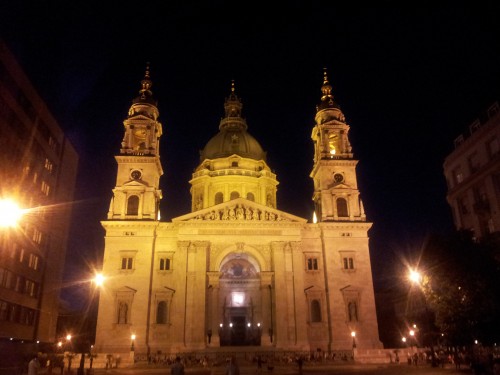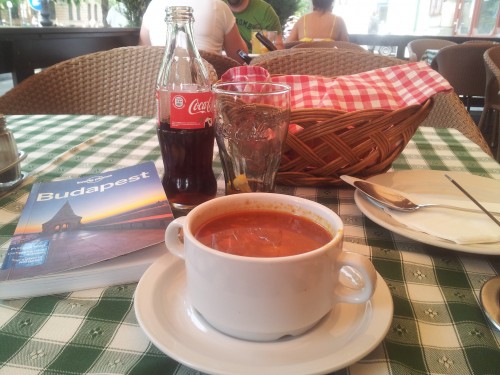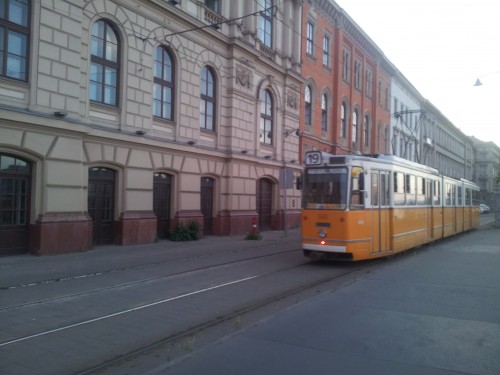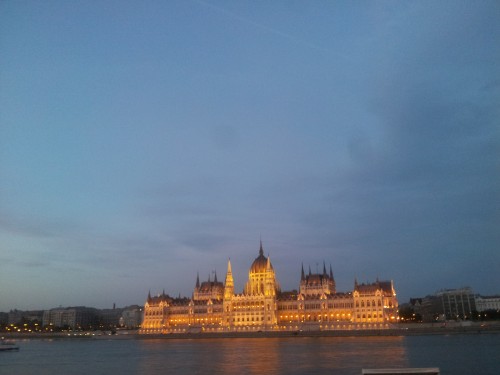A lot of people I know, and a lot of people on the internet seem to think of Budapest as a poor cousin to the more opulent and famous Vienna. That assumption is wrong at so many levels. For one – Budapest is quite magnificient in terms of culture, architecture,and history, so calling it a poor cousin is quite insulting. Number two – Yes, it’s cheaper than Vienna, but with the opening up of the economy and advent of tourism, it’s no longer the cheapest of destinations. Swanky hotels, hi-brow cafes,
gourmet restaurants, fancy cultural shows – Budapest has all these and more, and they don’t come cheap. So, if you are a budget traveler, you need to keep your eyes open, and figure out the best ways to enjoy the city.
Here are my tips:
How to get there:
If you are traveling out of India, one of the cheapest and nicest flight options is Lufthansa. (Between 50-60k depending on the time of year, and timeline of booking). I am of course partial to Emirates, but then they are a lot more expensive. The other option (and my preferred option) is to fly to a more popular European hub, and then travel by train to Budapest. Flights to popular hubs like Vienna and Prague are much cheaper, and you get to see a different country too! However, check on train prices to make sure that what you are saving on flights, you don’t give away on the train! Typically, trains in Eastern Europe are quite inexpensive, so you should ideally be able to manage.
Where do I stay:
So the nicest area in Budapest is the old town, but it’s also the most expensive. All the top hotel chains in the world including the Four Seasons, Marriott, and the Le Meriden have hotels clustered around this area. The great thing about these hotels (other than the luxury of course!) is that they are located in these really old buildings with spectacular architecture; so while you get the modern comforts, you also get a real sense of the place, with his history and atmosphere. However, a single budget traveler like me can’t afford that kind of grandeur! But then I discovered other options, and pretty smart ones too I think. Airbnb had quite a few options in the same locality, with similar architecture, minus the bells and whistles of course, and at a fraction of the price!
My tip: I had contacted quite a few people on Airbnb, and really liked a number of options provided there. I finally zeroed in on an apartment next to St. Stephen’s Cathedral and it was total value for money. One of my criteria for selecting a hotel is to figure out how close it is to public transport. As I have said before, Google maps is awesome for this purpose. Always make sure that you are close to metro lines and bus stops; spending on taxis would be a case of being penny wise, pound foolish!
Tip no 2: One of my dilemmas while booking a hotel was – should I book a more expensive place in the center of the city, or a less expensive one in the suburbs. In a city like Budapest where public transport is good, staying in the suburbs is not such a bad idea. After a good deal of introspection, I finally went with the city apartment. The only reason is that while in a city, it’s always best to be in the thick of things. Yes, the chain bridge and the surrounding area is really beautiful; but whats more important is that it’s also one of most ‘active areas’ in the city. I could walk around pretty late, dine in the street-side cafes, watch a football match and still walk back to my apartment at 1 am. That kind of flexibility is really awesome! So, yes – my recommendation would be to choose a placer closer to the center of the city!
What do I eat:
A lot of travel magazines will give you the names of local restaurants. I won’t for the simple reason that I couldn’t afford a lot of them! 🙂 Yes, food is cheaper than in say, Vienna, but for an Indian traveler, still not quite cheap! But this doesn’t mean that you won’t find any tasty options. There’s the kebab shops, pizzerias, and Chinese food options. Supermarkets have a good selection of breads, cheeses, and loads of wine! However, being a budget traveler doesn’t mean that you have to scrimp on experiences. I prefer a mixed approach – lunch is usually something quick and cheap like a sandwich or a kebab roll, but I would then splurge for dinner at a local restaurant/cafe. That way I still got to experience local food and culture, and it didn’t ruin my finances completely! Based on my landlady’s recommendations, I tried out the Lugas Étterem and Kisharang Étkezde restaurants – both were good!
My tip: Always plan for two or three meals where you can sample local cuisine. Hungarain cuisine is hardly limited to the popular Hungarian goulash. Traditionally, Hungarian food is supposed to be hearty and earthy, but it’s apparently being “lightened” up. I have to stay I still prefer the hearty traditional meat and potatoes kind of meal. It keeps you going for hours! Along with the local cuisine, there’s no shame in heading out to McDonalds, or buying rolls from bakeries. Money saved means more activities!
Transport: Budapest has an excellent and cheap public transport system. There are four metro lines, and that basically covers almost every part of the city. In addition to it, you also have a good network of buses and trams. There are quite a few taxis as well, but I haven’t heard the best things about them. Avoid using them! Depending on the amount of time you intend to spend in the city, you could decide to take a metro travel pass. I took a 24 hour metro pass on the days I knew I would be travelling a lot. At 1650 HUF (roughly 5 euros), it gave me unlimited metro rides, and was total value for money! There are also options for passes for three days, and a week. Considering that each metro ride (without transfers) is 350 HUF, buying a travel pass makes economic sense. So if you know you are going for 5 separate rides, go on and take the day-long pass. Also, if you are like me, and get lost frequently, you really don’t have to worry – you just need to travel back on the same pass! Another option is to buy a Budapest card, which enables you free travel on all public transport, along with the entry to a lot of museums and other sights. Make sure you buy the card only after checking that the all sights mentioned in the card are places of interest to you. If you don’t want to be dependent on public transport, you could always rent a bike!
Caution: Unlike other European cities, the Hungarians are very serious about ticket-less travel! There are ticket-inspectors at the platform entrances who look at your passes very diligently. If you are caught without a ticket, you would be fined on the spot. It’s not possible to buy tickets on the train, tram or bus, so make sure you buy it before boarding them!
Discovering the city
Best way to discover the city is to walk through it. Unfortunately, not all areas of Budapest are very well-maintained. The areas close to the Deli and Keleti railway stations are not ideal for walking. Best areas to walk around are of course near the Danube, and the surrounding monuments. Here’s my list of the top ten sights in Budapest:
1. The Chain Bridge
2. The Hungarian Parliament
3. The Dohány Street Synagogue
4. The Fisherman’s Bastion
5. The Great Market Hall
6. The Hungarian House of Wines
7. Saint Stephen’s Basilica
8. Matthias Church in the Castle District
9. The Citadella on Gellért hill
10. Széchenyi baths
Other tips:
1. Avoid the touristy trap – As you walk around the city, you could come across people advertising for various cultural shows. These shows are of not of the highest quality, and are predominantly created for unsuspecting tourists who are looking for “arty” things to do. Instead, if you want to watch the real deal, check the net for shows at the Hungarian State Opera. They have a year-long calendar with both opera and ballet.
2. One of my favorite places in Budapest is the Erkel theatre. One of most modern theaters in Budapest, it does not have the grandeur of the Opera house. Created with the idea of making ballet and opera accessible to everybody, it’s one of the best places to watch ballet or opera at ridiculously low rates. And there’s no compromise on quality – the shows are not meant for tourists, but more for art lovers or connoisseurs. I watched modern ballet conducted by the Hungarian National ballet group, and it’s the best show I have seen till date.
3. When I went to Budapest, the football World cup was on. Every evening people would gather at the square in front of St Stephens Basilica and watch the match on one of the big screens of the restaurants. People would bring their own wine and wine glasses, sit on the steps of the Basilica and chat and have a good time with their friends. What a cheap and fun way to experience Budapest!
3. Széchenyi baths – At 17 euros for a day at the spa, this is one of cheapest activities in Budapest. I enjoyed myself!







10 comments for “Budapest Destination Guide (Budapest Part 3)”